Windmills and dykes, I can hear you saying. Aren’t they Dutch? Well, we are in the north-east of Germany, near the North Sea, in East Friesland in Lower Saxony which is only separated from the Netherlands by a small stretch of water. From what I gather, the Dutch province of Friesland and the German province were both occupied by the Frisians until the 15th century.
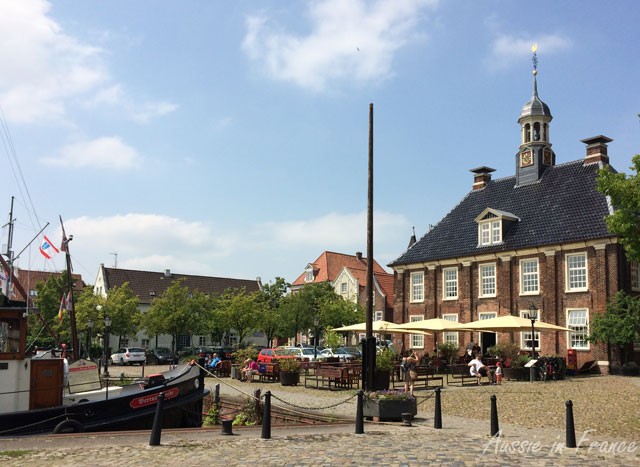
Day 1. Bremen to Norden takes about 2 hours so we’ve scheduled lunch at Leer. There’s a photo on the cycling map of a restaurant called Zur Waage und Börse in front of the town’s most historical building, the Waage, which my dictionary says means “scales” so I guess it’s a weighing station. We have an excellent dish of plaice which I learn is Scholle, which is going to be a useful word because it is the local dish.
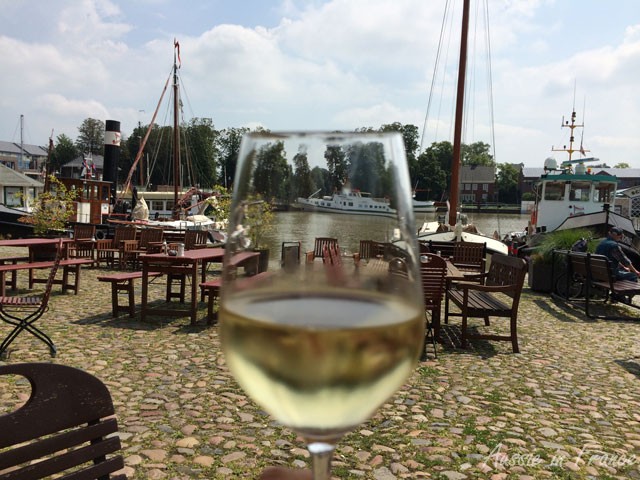
When we arrive in Norden, the first thing we see are two windmills, on either side of a shopping centre. We buy supplies for our evening picnic.
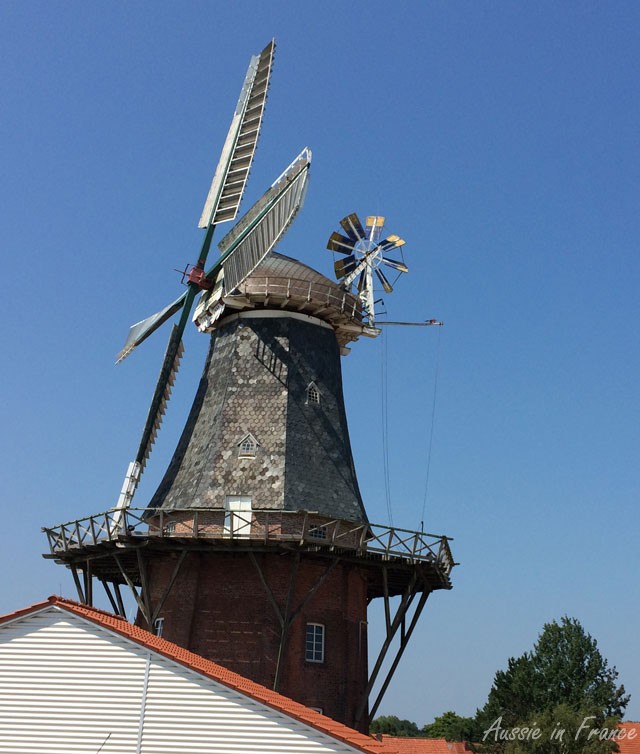
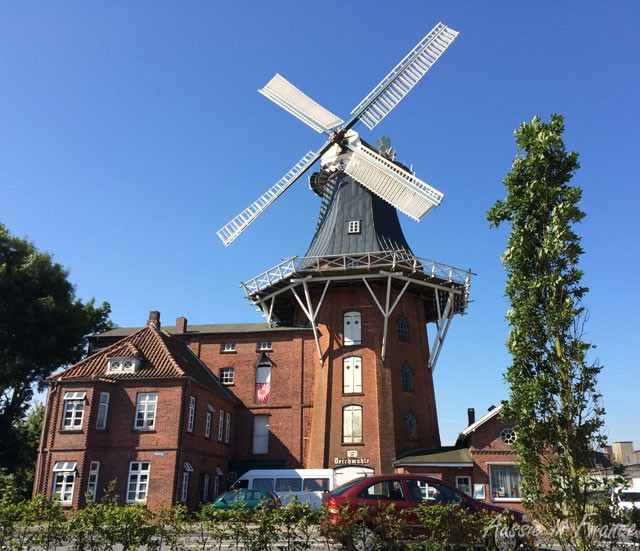
Hotel Stadt Norden, although well-located, turns out to be a disappointment. It’s the most expensive so far at 110 euro/night, rather run-down with frayed towels, despite being a 4-star hotel! The young boy on reception seemed outraged that we didn’t guess the entrance to the parking lot was in a back street. Later when I ask for help with my wifi connection, he also seems to take it as a personal affront.
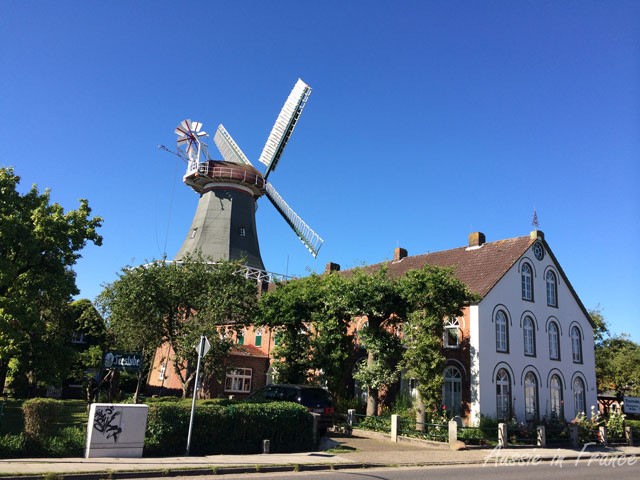
But we pack our picnic and by 6.45 pm are on our bikes. The weather is beautiful so we head for the coast (well, for the end of the polder on the other side of the dyke), passing another windmill on the way out of Norden. After reaching Nord-deich (deich means dyke), we ride parallel to the dyke rather than on top because of the sheep and we know how I attract sheep! We also see an amazing number of wind turbines.
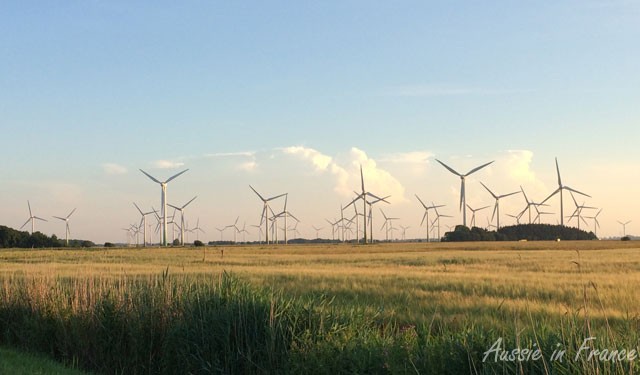
Jean Michel has a great time watching the tractors and other farming equipment which he claims are performing tasks he’s never seen in France and thinks may contribute to the biomass process.
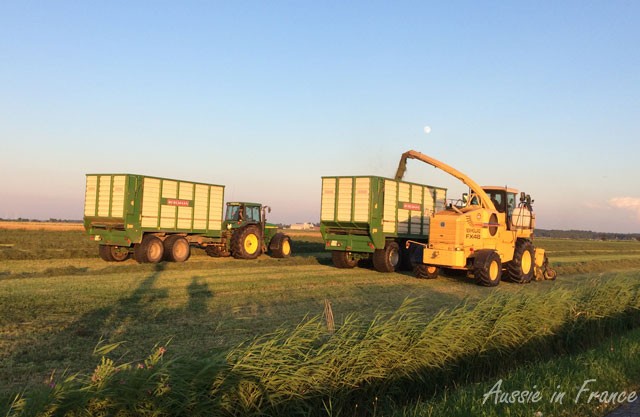
Three hours and 32 Km later, we are back at our hotel, ready to sink into bed!
Day 2. The blackout curtains are effective in keeping out the light so we reach the breakfast room around 9 am after the rush. The selection is quite good with scrambled, fried and boiled eggs and smoked salmon in addition to the usual cheese and pork cuts. There is even champagne but I don’t see anyone drinking it …
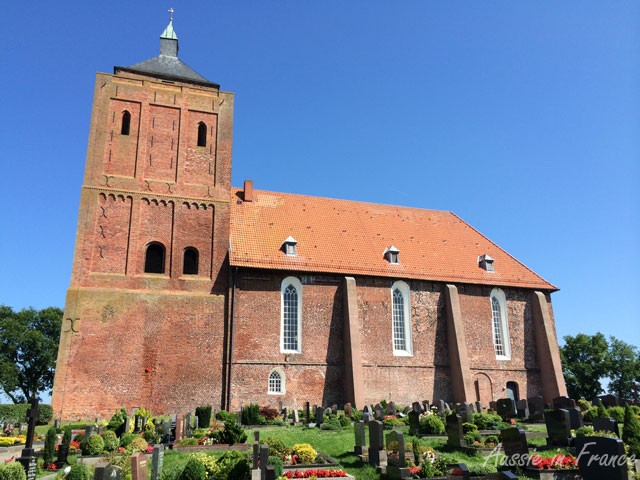
This is to be a big day, with a 57-km circuit. We set out from Norden to Marienkirche in Marienhafe. Hafe means port which is interesting because we’re inland but the church was built in 1230 before the dykes and polders added large stretches of farming land.
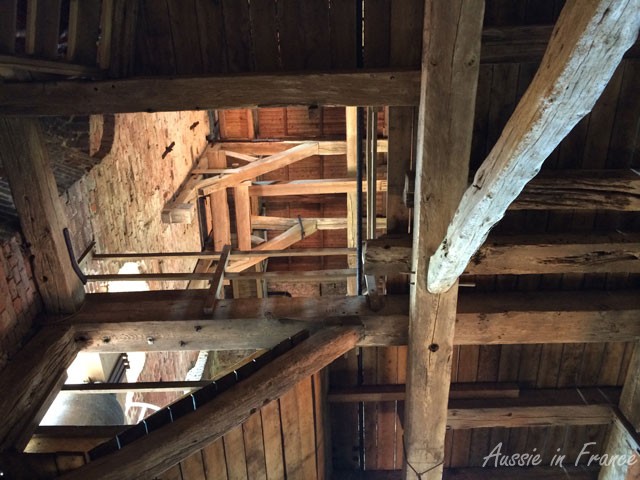
The church doesn’t appear to be open but there is a sign indicating a museum. We climb up to the first floor and see a winding staircase going up to the tower. I rashly suggest we buy tickets and we start walking up. By the time we get to the first floor, I’m feeling weak at the knees. There’s still another couple of floors to go. “I’ll just wait here”, I announce.
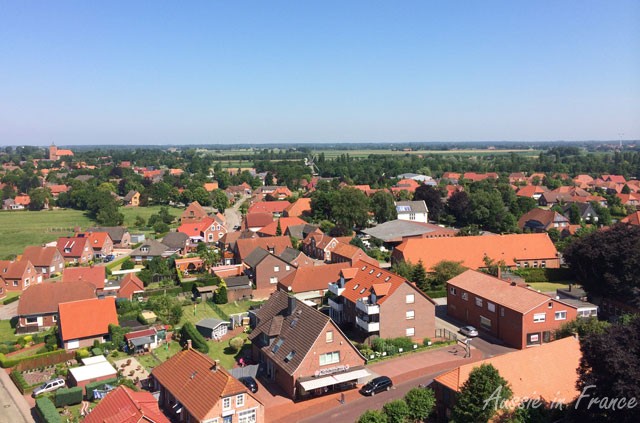
But I decide I may as well continue now that I’ve got this far. Now, that’s a bad move. The steps are narrower and steeper. I stay glued to Jean Michel’s patient back until we finally reach the top. The view is magnificient but I’m not really sure it’s worth it. Coming down is even worse. I have to follow Jean Michel, once step at a time. The last flight is a breeze compared with the other two. We learn the tower was so dilapidated in the 19th century that the top two floors were removed. What a relief!
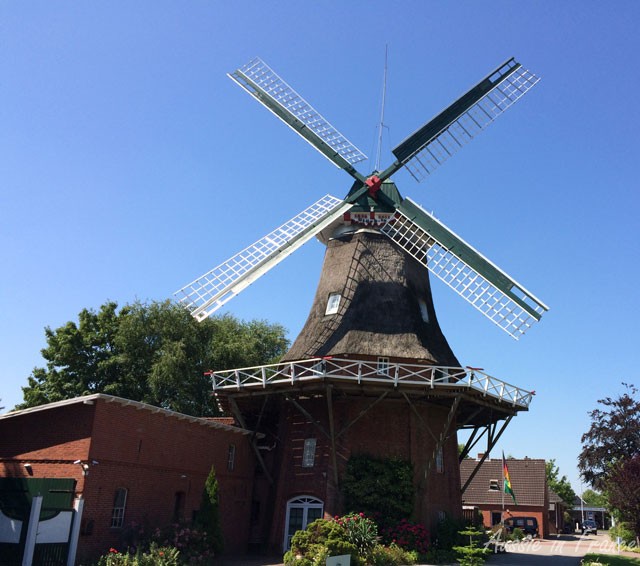
There seem to be no cafés around for a morning break so we get back on our bikes to visit two more windmills. I’m still not feeling all that confident. Just as we reach the second windmill, I hear a car behind me and realise that I’m on the street and not on the bike path. I panic and don’t mount the footpath at the right angle. Next moment I’m crashing into the hedge.
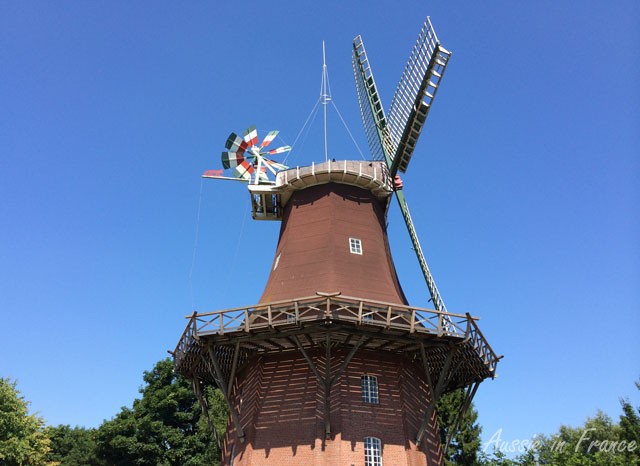
The boy driving the car stops and gets out but I can’t even explain it’s not his fault! I get up and pull my bike up to show I’m not hurt and limp round the corner to a handy bench. I’ve grazed one knee badly and given myself a terrific bruise on the other leg. My pride is also severely wounded. Jean Michel is very reassuring and helps me clean the wound with our first-aid kit. I haven’t fallen off my bike since Jean Michel tried to kiss me cycling along the Marne.
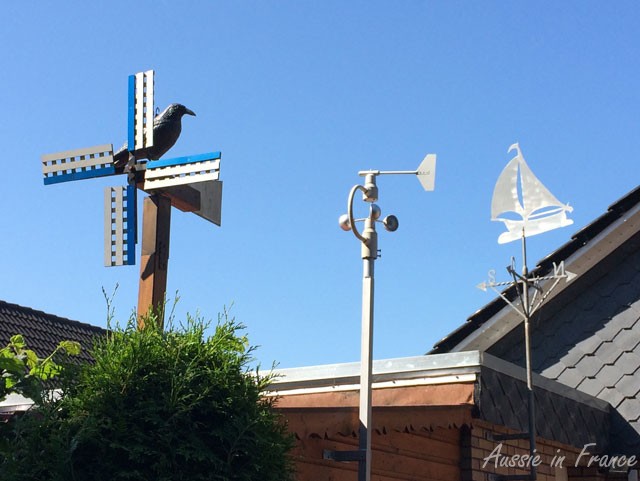
After a few photos of the windmill, we mount our bikes again. My knee is quite painful for a while but it doesn’t actually stop me cycling.
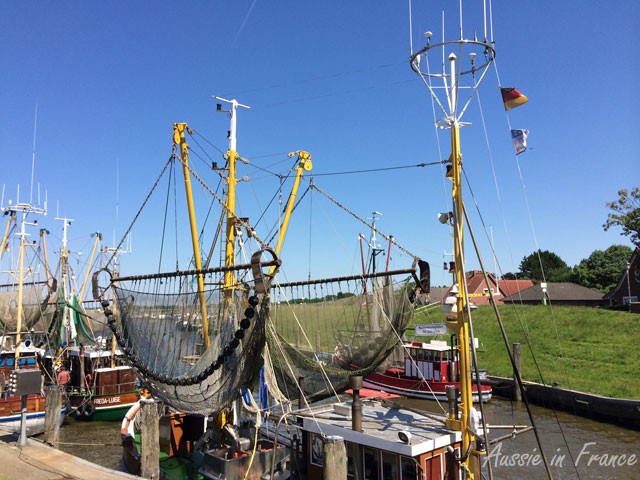
Next stop is the very pretty little port of Greetsiel with its traditional fishing boats.
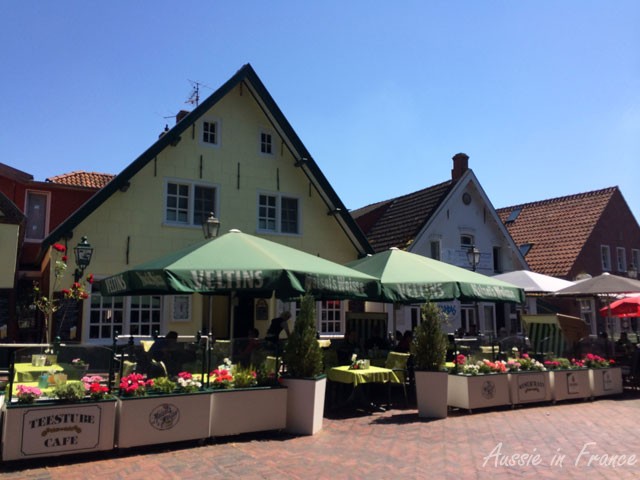
We have scholle at the Captains Dinner but Jean Michel is convinced it’s not the same fish as the one we ate in Leer the day before, even though it’s the same word in German. The waitress speaks English which is a relief. We are buffeted about by the wind but it’s still warm and sunny. I hate to imagine what it must be like in winter.
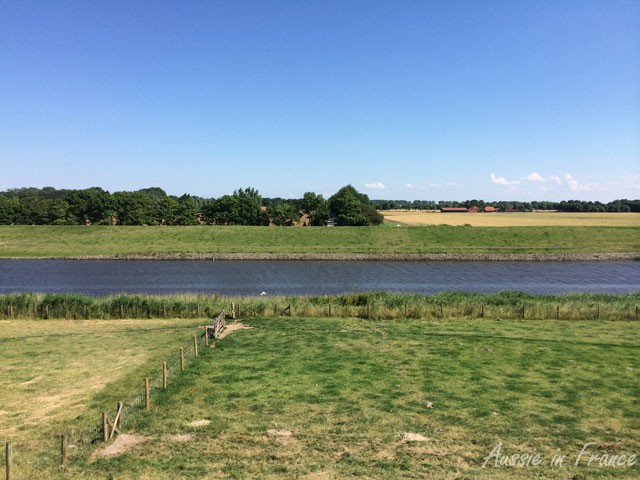
After exploring the little town, we start the return journey to Norden, passing more dykes and wind turbines, both of which are synonymous with wind. Fortunately, it’s about 26 or 27°C so at least it isn’t a cold wind. At one stage, we have a canal on the other side as well.
By the time we get back at 6.30 pm, we’ve clocked up 57 km and all I want to do is have a cold drink and stretch out on the bed! I’m thankful that I didn’t do myself any greater harm.
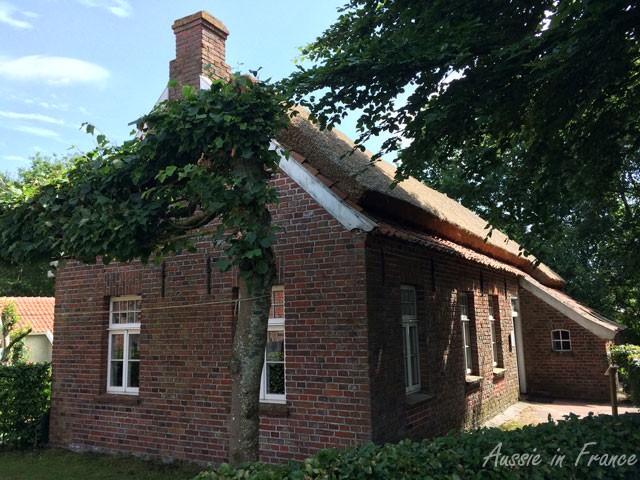
Day 3. It’s our last day in Norden and we’ve exhausted the immediate surroundings so drive to Marienhafe to take the 37-km thatched roof circuit. The thatched roofs are all in an outdoor peat bog museum. We’ve seen some from time to time but the thatch doesn’t go to the end of the roof so Jean Michel is not convinced of their authenticity.
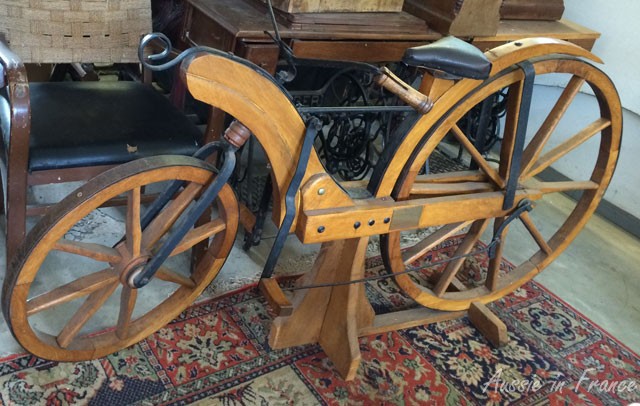
On the way, we see another windmill in Münkeboe, whose adjacent house contains various objects, including a couple of wooden bicycles. I hate to think how many falls I could have on those!
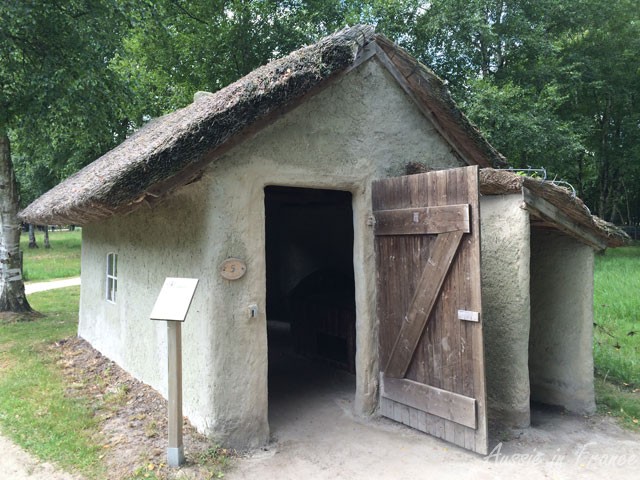
The Moormuseum in Moordorf proves to very interesting. The lady at the ticket counter obligingly finds us document in English and in French and although the little video they’re showing is in German, it is quite understandable.
It’s hard to imagine living in such terrible poverty. The houses are tiny, damp and isolated.
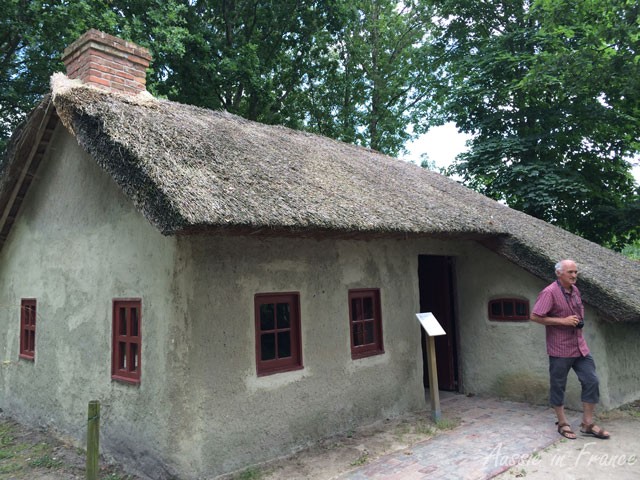
Demonstrations of various crafts such as spinning, knitting and ironwork are held on Saturday afternoons. Jean Michel finds himself invited to share a pot of pork and split pea stew by some of the demonstrators and calls me to join him.
That is the last food we see until 4.30 pm. There is a teestube but there are a lot of people and apart from matjees (herring), we can’t work out what else there is to eat. There is only beer and brannwein (which I later discover is a sort of vodka) so we decide to push on.
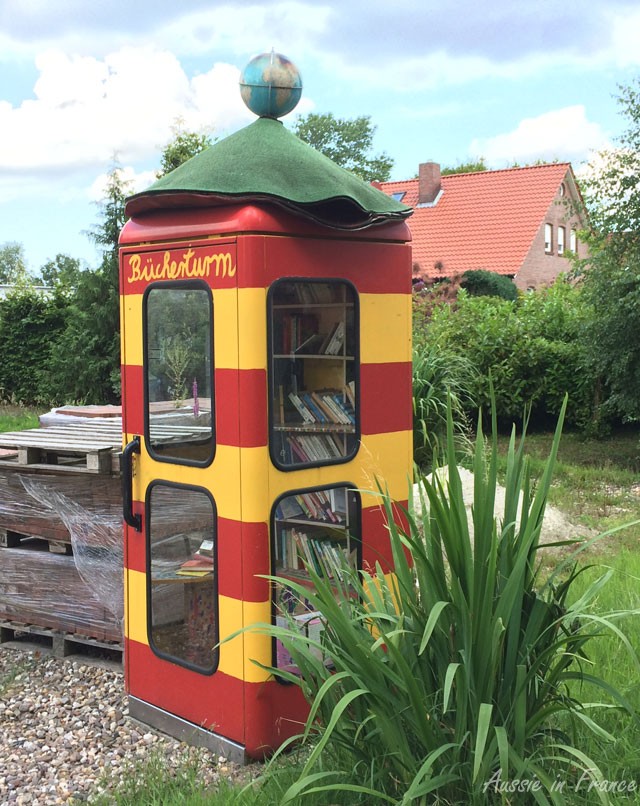
It is not until we have made several wrong turnings and encountered this strange “book tower” that we arrive back in Marienhafe (we’re now up to 44 km) and console ourselves with a triple ice-cream because everything else is closed.
We have a third type of scholle at the hotel restaurant which also serves complementary pea soup and a moka cream affair with our decaffeinated coffee.
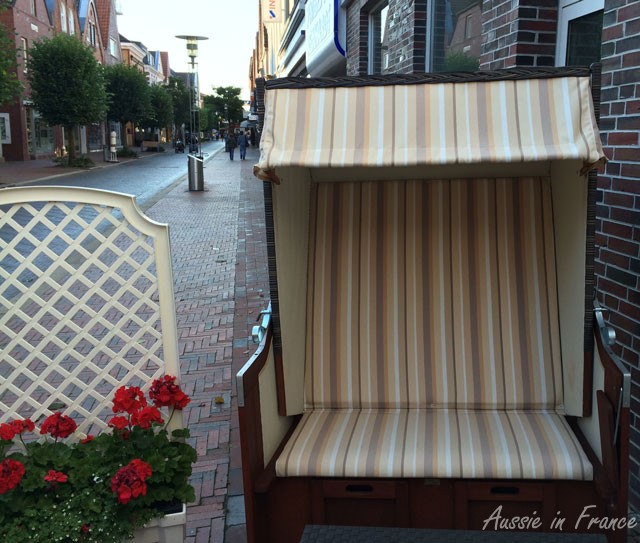
Three great days of sun and cycling but tomorrow we’re expecting rain clouds so are off to another destination.




I hd to laugh. Your 1st words echoed exactly what I was thinking.
Your blog has opened my mind to a very different Germany to that I have experienced.
The Book Tower is fascinating. Does it work on an exchange system?
We love cycling because it encourages us to get off the beaten track. Had we not overshot a turn-off we would never have seen the book tower. Unfortunately, we have no idea what it was about. It could have been an exchange, a place to just pick up a book or a modern sculpture. It was on the edge of a tiny, unprepossessing village. I saw a wonderful garden with every decoration you could imagine – windmills, well, sheep, pigs, the works. I so regretted not taking a photo.
It is such beautiful countryside… and those windmills are real beauties.
Yes, they certainly are.
Glad nothing much was hurt in your fall, well apart from your dignity of course! You certainly cover some ground on your holidays. Appreciate how informative your writing is, and great photos too. Stay safe.
Thank you! Glad you’re enjoying the posts. We are basically following the good weather …
Bad luck about the fall, but brownie points to the driver for stopping. It’s so embarrassing when that sort of thing happens and you can’t explain yourself.
Are the farmers bringing in silage fodder? What does JM mean by the biomass process?
The book tower looks intriguing.
Jean Michel says that they cut then crush half-dry grass which is then fed into a truck (maybe a digester). He couldn’t verify this on the web but it seems that it is for biomass because it didn’t seem to be the usual process for silage fodder.
We’re not sure what the book tower is for!
OK, so they are possibly using silage fodder (maybe excess to requirements as stock feed) to produce methane for fuel in an anaerobic digester.
Yes, that’s what it sounds like and we’ve seen the corresponding methane tanks.